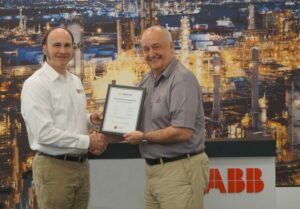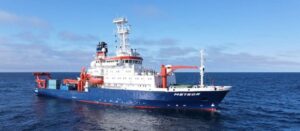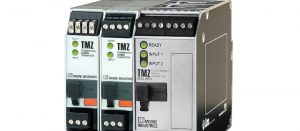![]()
Anemometers are devices that have traditionally been used for measurement of wind speed and direction for meteorological data requirements.
Evolution and technological advances across the globe have seen the expansion of anemometer use into many varying sectors for measurement such as; duct velocity in HVAC systems, fume hood performance in laboratories, aerodynamic development for vehicle transportation, exhaust stack flow for environmental emissions, fluid dynamics and so on. They are now a fundamental day to day measurement across a variety of industries and just as new sectors arrive so do new instrument, methodologies and measurement techniques.
Types of Anemometer
Cup Anemometer, is one of the oldest types of anemometer, commonly used in the Meteorological sector for weather measurement of wind speed and direction and are often seen on masts, cranes, weather station, airports, boats, oil rigs and towers. They are a robust style meter that continues to prove itself in the harshest of environments. They generally have 3 or 4 cups, which as the wind blows, the cup rotates and outputs a frequency. The faster the cup rotates the higher the frequency and a calibration of frequency against air velocity is derived. They do not need to be pointed into the direction of wind so are ideal for remote, permanent installations but as a mechanical device they are prone to friction and have a higher start-up speed of above 0.2 m/s. Due to their size and flow blockage they pose a problem for many calibration laboratories due to the size of wind tunnel required to successfully calibrate these devices.
Rotating Vane Anemometer is also a mechanical type meter where increasing air speed causes the vane to rotate at high speeds and a frequency to air velocity calibration is derived. In this case, the axis of vane rotation is parallel to the direction of the wind, and so must be held or positioned towards the wind source. They are often used for the air velocity measurements above 0.3 m/s in manufacturing, laboratory, computer rooms, environmental control, flow hood monitoring, duct and grille velocity measurements.
Thermal Anemometer, or often known as hot wire anemometers use the air velocity to cool a heated wire or film, where the higher the air velocity the more power is required to keep the wire at a constant temperature. Thermal anemometers have extremely high frequency response and fine spatial resolution and are often used for detailed study of turbulent flows in which rapid velocity fluctuations are of interest. High grade instruments are known as CTA’s or constant temperature anemometers and can be manufactured in 1, 2 or 3 axes of measurement. Very low velocities can be measured using thermal anemometers, but they cannot be used in dirty or wet environments.
Pitot Tube, S type and L type probes can be calibrated over a wide range of air velocities and results can also be derived for pitot head coefficients. A pitot tube is one of the simplest types of velocity sensors that also requires a differential pressure sensor to measure the difference between the high and low ports. Due to the low measurement differential pressures at low velocities pitot tubes are rarely used below 3 m/s. They are used throughout the aviation industry for air speed measurement, in racing cars, wind tunnels, duct and stack measurement and have a very high velocity measurement range. They are relatively inexpensive on their own but do require a DP sensor to complete the measurement system.
Ultrasonic Anemometers have a pair of transducers for each axis of measurement and work on the time response of an ultrasonic wave from the transmit transducer to the capture of the wave at the receiving transducer. No moving parts, quick response, and wide operating range making them suitable for extreme weather conditions. Due to their physical size care must be taken with blockage and sensor calibration.
Laser Doppler Anemometer uses a continuous wave laser source which is divided into two beams using a Bragg cell, the two beams are aimed to the focal point in the air flow stream, where the scattered light produced in the fringe volume made possible by tiny seeding material produces a doppler shift which proportional to the air velocity, by use of optics, lens, filtering, photo detector and signal conditioning the air velocity can be accurately determined. These types of anemometers are extremely accurate and can measure even the slightest changes in air velocity. They are mainly used for research in fluid dynamic studies and as calibration reference devices, with a measurement uncertainty as low as 0.05% of reading.
Young Calibration is one of the UK’s leading UKAS accredited calibration laboratories and operates to ISO/IEC 17025:2017 for its’ air velocity wind tunnel facilities and can calibrate all types of anemometer. The UKAS accredited wind tunnels cover an air velocity range of 0.05 to 80 m/s.
Click here for more informationClick here for related articles and news
Sign up for Flow Control and Measurement E-Updates
The Young Calibration laboratory provides UKAS accredited calibration (Laboratory 0604) services and thermal fluid and component testing services to a wide scope of industries whilst maintaining a reputation for quality, cost effectiveness, impartiality and reliability. Our specialist UKAS accreditation offerings for aviation, automotive, medical, environmental …
Source of Article



